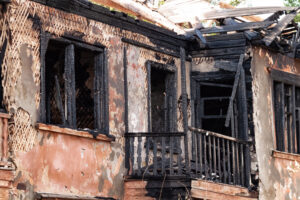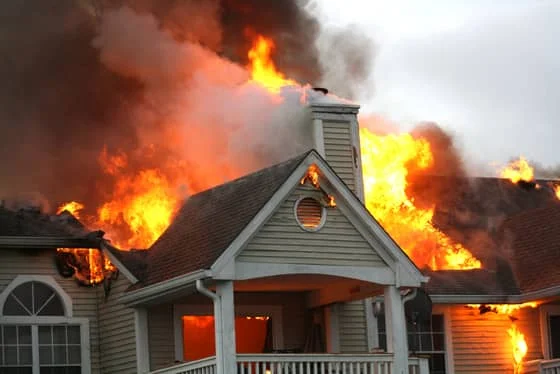In the hustle and bustle of daily life, it’s easy to overlook the hidden dangers that flammable objects pose in our homes. While many common household items appear innocent and harmless, they can sometimes flare up and cause destructive fires. Recent news highlights a number of house fires that have been very catastrophic.
In Temple City, a tragic fire led to three fatalities and two injuries, with a local resident detained for questioning as investigations continue. At the same time, in Huntsville, there was a fire that claimed a lot of damage worth around 500,000 and unfortunately led to the death of a pet. Much of the house was lost in the fire, the ground floor and roof being two of the main casualties. Furthermore, another house in Portsmouth was destroyed to the ground and the cause remains under investigation by the state Fire Marshal.
These incidents underscore the critical importance of fire safety and awareness in preventing such tragedies.
Identifying Common Flammable Items at Home
Surprisingly, many everyday items are classified as flammable objects. For example, household cleaning agents very often contain fugitive chemicals that are flammable under specific conditions. Fire can arise with poorly stored aerosol cans, paints, and even some forms of cosmetics when heat is applied to them.
Furniture and textiles, especially those made from synthetic materials, are also potential hazards. Couches, curtains, and carpets can quickly catch fire and spread flames throughout a room. Knowledge of the combustibility of various substances and using non combustible materials whenever possible, an easy but effective preventative measure can be employed.
Don’t forget about electrical appliances and devices. Sparking can occur when power strips are overused, electrical chargers are damaged, or there are old wires. An appropriate upkeep and caution in the use of electrical appliances can help reduce these hazards and ensure a safe environment.
Understanding the Risks of Overlooked Flammables
Flammable objects are more than just fire hazards, they also pose health risks. Inhaling fumes from burning synthetic materials can have serious health implications, including respiratory issues and toxic exposure. It’s crucial for homeowners, especially parents, to recognize these hidden dangers and take preventive actions.
Many flammable items remain overlooked due to their everyday nature. For example, cooking oils and greases are commonplace in kitchens but can easily ignite if left unattended near open flames. Awareness and proper handling of such materials are essential to prevent accidental fires.
Another often-overlooked risk is the accumulation of dust and lint in household appliances. Dryer lint, for instance, is highly flammable and can cause fires if not regularly cleaned. Regular maintenance and cleaning routines can effectively reduce these risks and enhance household safety.
Best Practices for Storing and Using Flammable Items
To mitigate the risks associated with flammable objects, proper storage practices are vital. Store inflammable liquids like petrol and solvents in shaded and airy spaces, distant from sunlight and other sources of heat. Make sure that these containers are properly marked and kept away from children.
For families with young children, extra precautions are necessary. In order to keep children safe, it is necessary to install childproof locks on those cabinets that contain any harmful substances. Teach your kids the risks of fire and burning materials on a positive note in order to foster a safety-conscious mindset from an early age.
Moreover, do exercise caution while using electrical devices. Do not overload the outlets and remember to unplug the devices when they are not in use. Cords and plugs should also be checked regularly for wear and tear to avoid any risk of fire caused by electrical sparks. These are some very easy and practical measures to take care of which can help to greatly mitigate the occurrence of fire accidents in one’s home.
Safer Alternatives for Common Household Items
When looking for ways to improve safety at home, a good solution is to find substitutes for hazardous materials. Wherever possible, replace ordinary wax candles with those made out of light-emitting diodes that also give the warm glow of a candle but do not pose any safety threats associated with naked flames. Use chemical-free cleaning agents, which can cause less damage to the environment while also minimizing the risk of fire.
Consider using fire-retardant fabrics for curtains and upholstery. These materials are treated to resist ignition, providing an added layer of protection. Similarly, opt for natural fiber furniture made of wool or cotton which are less combustible than synthetic materials.
For electric appliances, invest in surge protectors and devices with automatic shut-off features. Such technologies could avert excessive heat build-up and electrical hazards, allowing the homeowners to live worry-free. Implementing these safer alternatives takes little effort but presents great safety benefits.
Post-Fire Options for Homeowners
Experiencing a house fire is traumatic, but recovery is possible with the right steps. After ensuring everyone’s safety, assess the damage and contact your insurance provider to begin the claims process. It is essential to photograph and write down all the damages sustained for an effortless claiming process.
If the fire damage is extensive, consider on how to remodel your home after a fire. Engaging the services of a qualified restoration firm can assist restore a house or commercial establishment back to its normal or even install some modern safety measurements. This conquest can also be seen as a chance to add some fire resistant materials and designs.
For those looking to relocate, burnt houses for sale can offer a unique opportunity. Purchasing a fire-damaged property at a reduced price and renovating it can be a worthwhile investment. Nevertheless, it is critical to carefully evaluate the building’s condition and the necessary expenses incurred prior to arriving at a conclusion.
Conclusion on the Importance of Vigilance
In conclusion, being aware of the flammable objects within your home is crucial for preventing fires and ensuring the safety of your loved ones. By identifying common hazards, understanding the associated risks, and implementing proper storage and usage practices, you can significantly reduce the likelihood of fire-related accidents.
Prioritizing safer alternatives and considering post-fire options can further enhance your household’s safety and resilience. Remember, vigilance and proactive measures are key to maintaining a secure home environment for everyone.
For further resources and expert guidance on household safety, consider reaching out to local fire departments or safety organizations. They can provide valuable insights and tools to help you create a safer living space. Stay informed, stay prepared, and keep your home safe from the hidden dangers of flammable objects.

